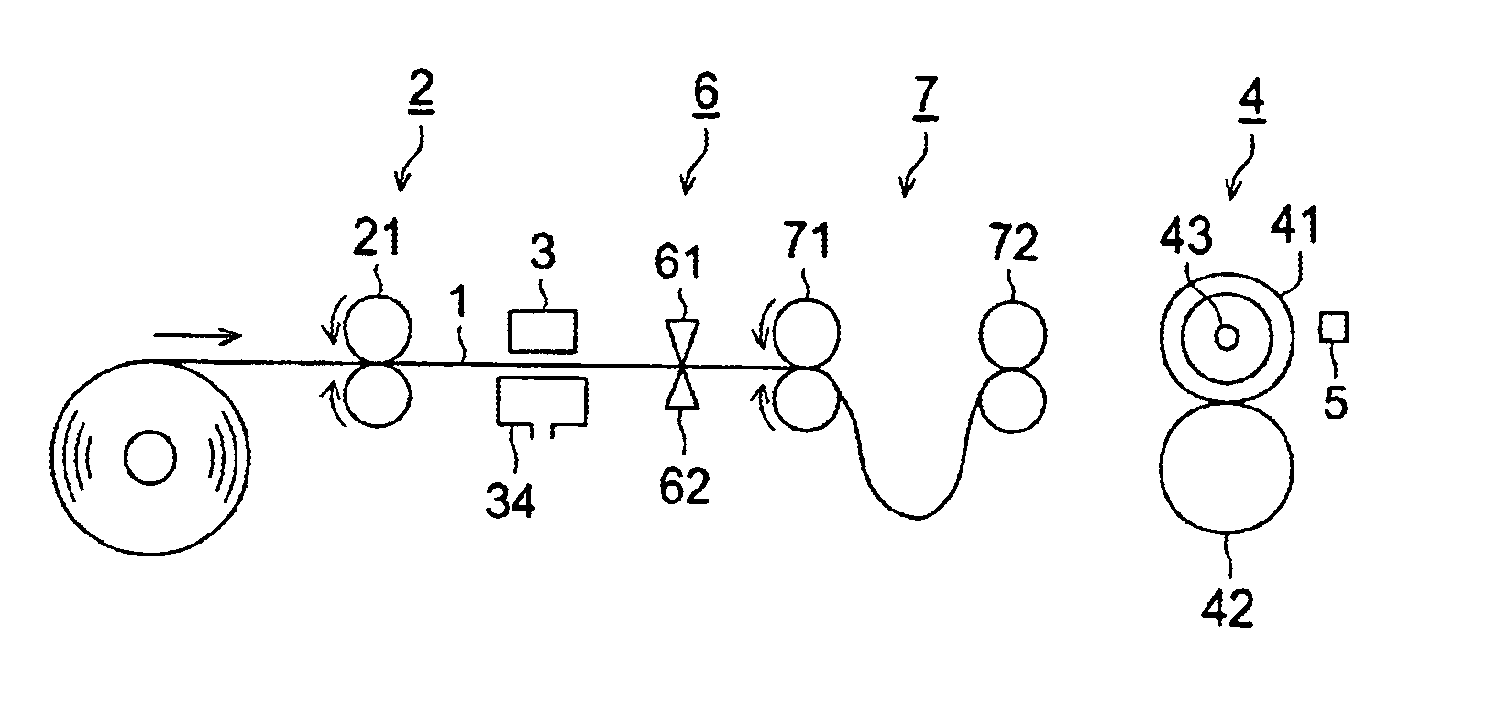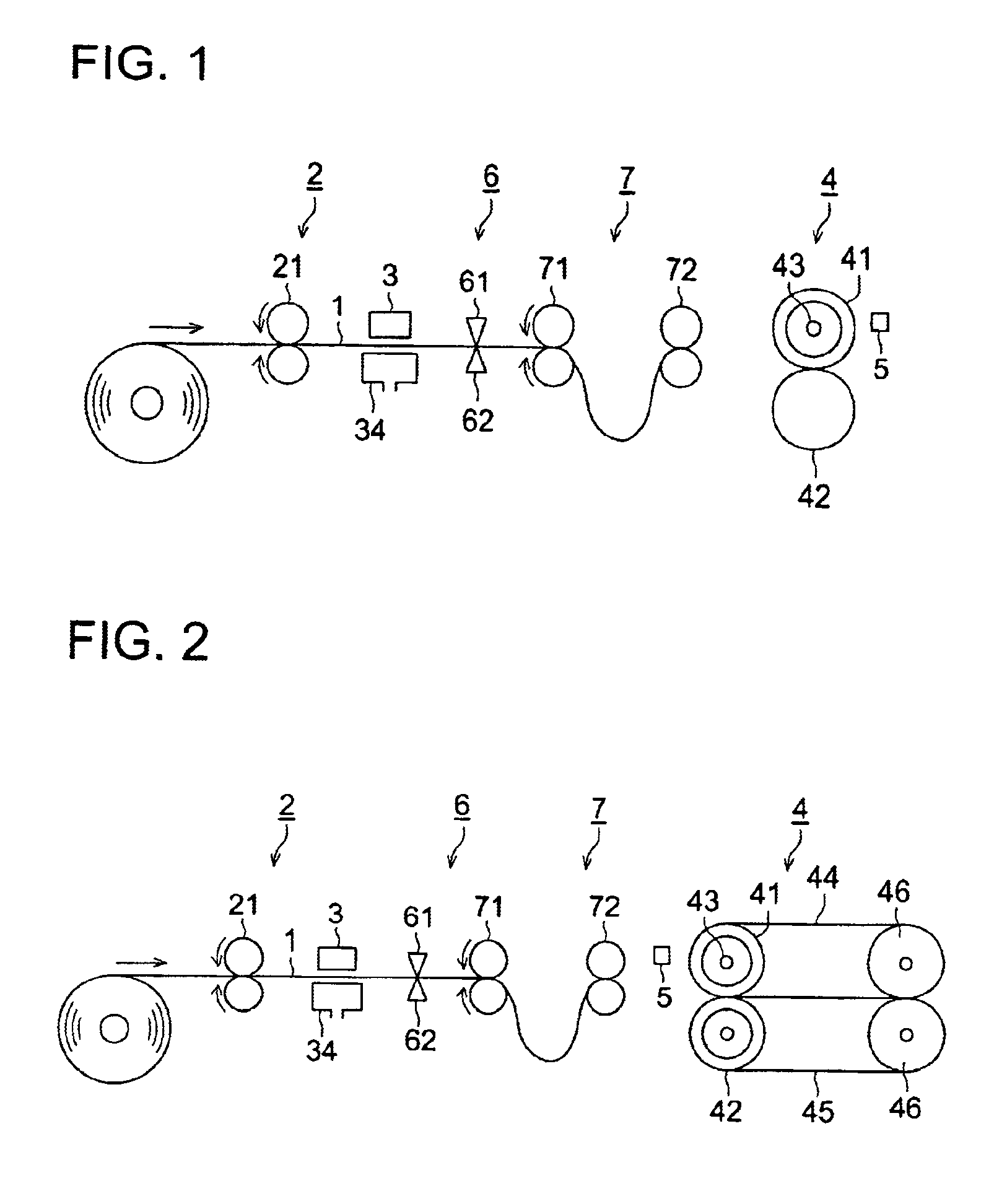Inkjet recording method and inkjet recording apparatus
- Summary
- Abstract
- Description
- Claims
- Application Information
AI Technical Summary
Benefits of technology
Problems solved by technology
Method used
Image
Examples
examples
[0177]In what follows, the invention will be explained concretely according to examples, however, the invention is not limited thereto.
[0178]An inkjet recording medium was prepared according to the following procedure.
[0179]Titanium oxide of 20 kg having a mean particle diameter of 0.25 μm (manufactured by Ishihara Sangyo Kaisha, Ltd.: W-10) were added into an aqueous solution of 90 liters containing 150 g of sodium tripolyphosphate having a pH of 7.5, 500 g of polyvinyl alcohol (manufactured by Kraray Co., Ltd.: PVA235, a mean polymerization degree of 3500), 150 g of cationic polymer (P-1) and 10 g of defoaming agent SN381, manufactured by Sunnopco Co., Ltd., and the system was made up to 100 liters after having been dispersed by use of a high pressure homogenizer (produced by Sanwa Kogyo Co., Ltd.) to obtain homogeneous titanium oxide dispersion solution-1.
[0180]After silica by a gas phase method (manufactured by Nippon Aerosil Kogyo Co., Ltd: A300) of 125 kg having a primary part...
PUM
| Property | Measurement | Unit |
|---|---|---|
| Thickness | aaaaa | aaaaa |
| Thickness | aaaaa | aaaaa |
| Melting point | aaaaa | aaaaa |
Abstract
Description
Claims
Application Information
 Login to View More
Login to View More - R&D
- Intellectual Property
- Life Sciences
- Materials
- Tech Scout
- Unparalleled Data Quality
- Higher Quality Content
- 60% Fewer Hallucinations
Browse by: Latest US Patents, China's latest patents, Technical Efficacy Thesaurus, Application Domain, Technology Topic, Popular Technical Reports.
© 2025 PatSnap. All rights reserved.Legal|Privacy policy|Modern Slavery Act Transparency Statement|Sitemap|About US| Contact US: help@patsnap.com



